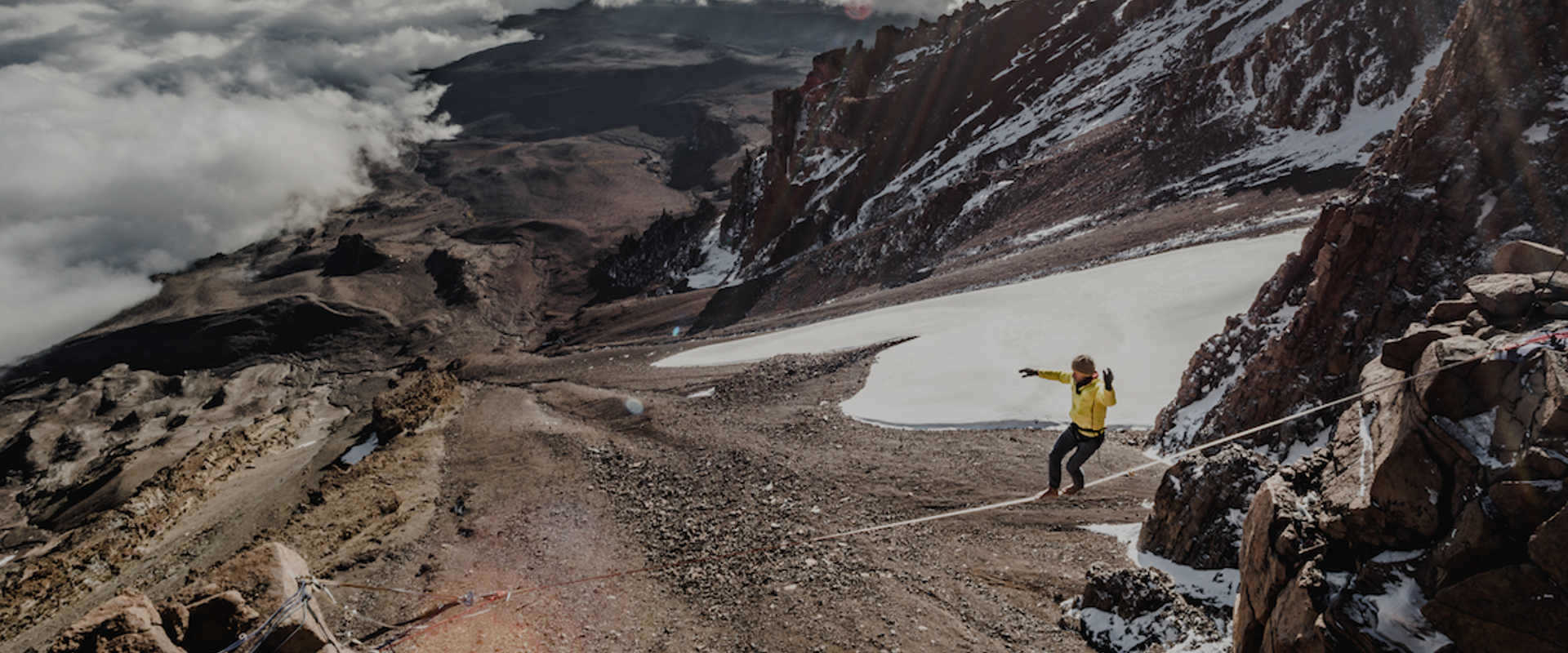Just last week, Swiss alpinist Stephan Siegrist set a new record by walking across a highline at 5700 meters (18,700 ft) on Africa's most famous mountain - Kilimanjaro.
The daredevil stunt by the Mammut Pro team athlete was the highest highline walk ever to have been completed. The previous record, which was only set last year in India, saw Hungarian Bence Kerekes walk at a height of 5,322 meters in Ladakh.
Siegrist is no stranger to the situation having completed highlines on Alpine mountains such as the Matterhorn and Dufourspitze. However, as the Swiss athlete noted, everything was not plain sailing on the 21-meter crossing.
A struggle at altitude
“At this altitude, everything is slower – and that goes for balance too,” said Siegrist. "The low oxygen content of the air not only makes breathing difficult, but it also means that you feel dizzy more quickly. Placing one foot on the highline to begin the crossing was particularly difficult. “It was interesting to see how the highline responded to the slightest tension… When I wasn’t completely relaxed, the webbing immediately trembled a bit.”
Although the highline was at an altitude of 5,700 meters, the rope itself was roughly 150 meters (492 feet) off the ground at the Arrow Glacier Camp near Kilimanjaro's summit.
As Siegrist noted, the problem was not the height off the ground, but the altitude. Low levels of oxygen make reactions slower, breathing harder and thinking clearly more difficult.
Highlines require incredible amounts of balance and even though the Swiss athlete is well acclimatized to mountain regions, the altitude still affected Siegrist's ability to react to wind changes considerably. The athlete struggled for some time making slow progress before eventually crossing the 21 meter line.
Highlining or 'slacklining' is becoming more and more popular in recent years and the trend for higher and higher attempts is likely to continue. Perhaps it is only a matter of time before Mount Everest receives its first highline athlete!










